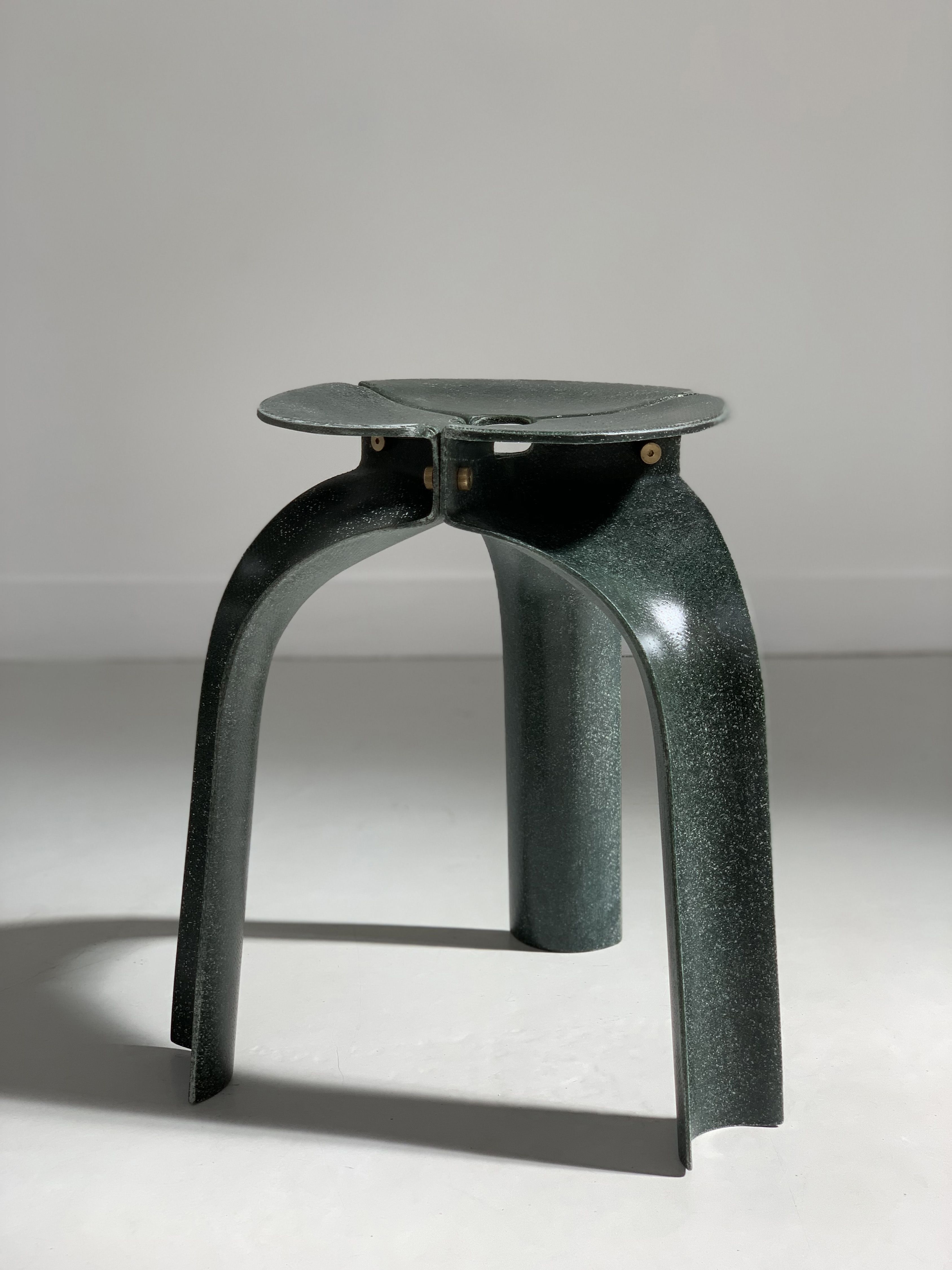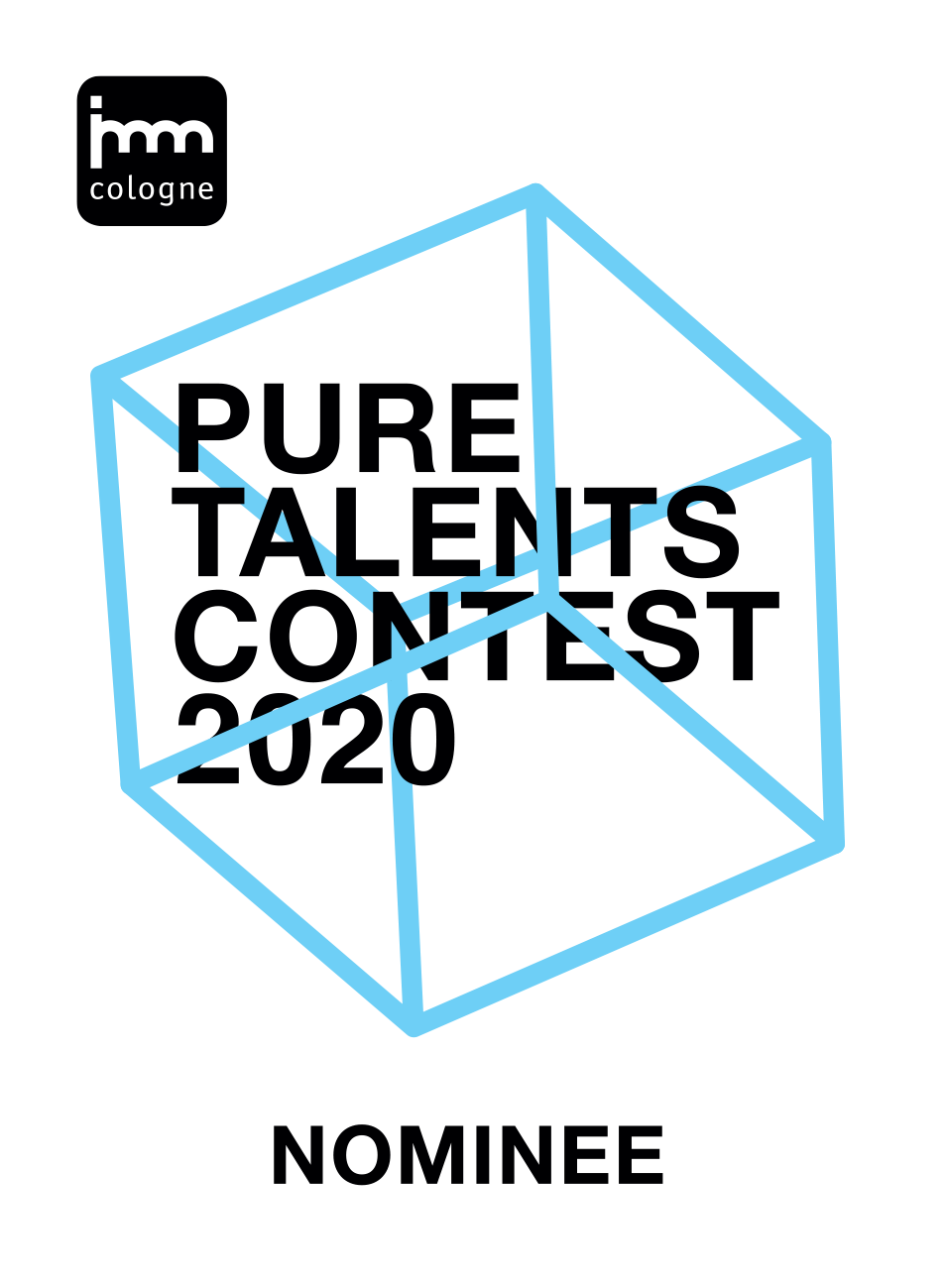
Flax Fiber Triplex Stool
Recognition:
- Wallpaper* Magazine Design Award 2021, Best Use of Material, Winner
- Dezeen Awards 2020, Seating Design, Shortlisted
- INDE Awards 2020, The Object, Honourable Mention
- Architizer A+ Awards 2020, Furnishings: Residential Seating, Special Mention
- Exhibited in imm Cologne Pure Talents Contest 2020
Triplex Stool is an experimental furniture that pushes the physical limits of a stool; from structure to weight; assembly process to after-life. The super light module is made of biodegradable flax fibre, one of the strongest natural cellulosic material found.
Designed with a strategically curved geometry, the stool stands elegantly on its arches and embraces weight above. It is intended to be carried along when moving apartments or cities. Its stack-ability is ideal for shipping and storage.

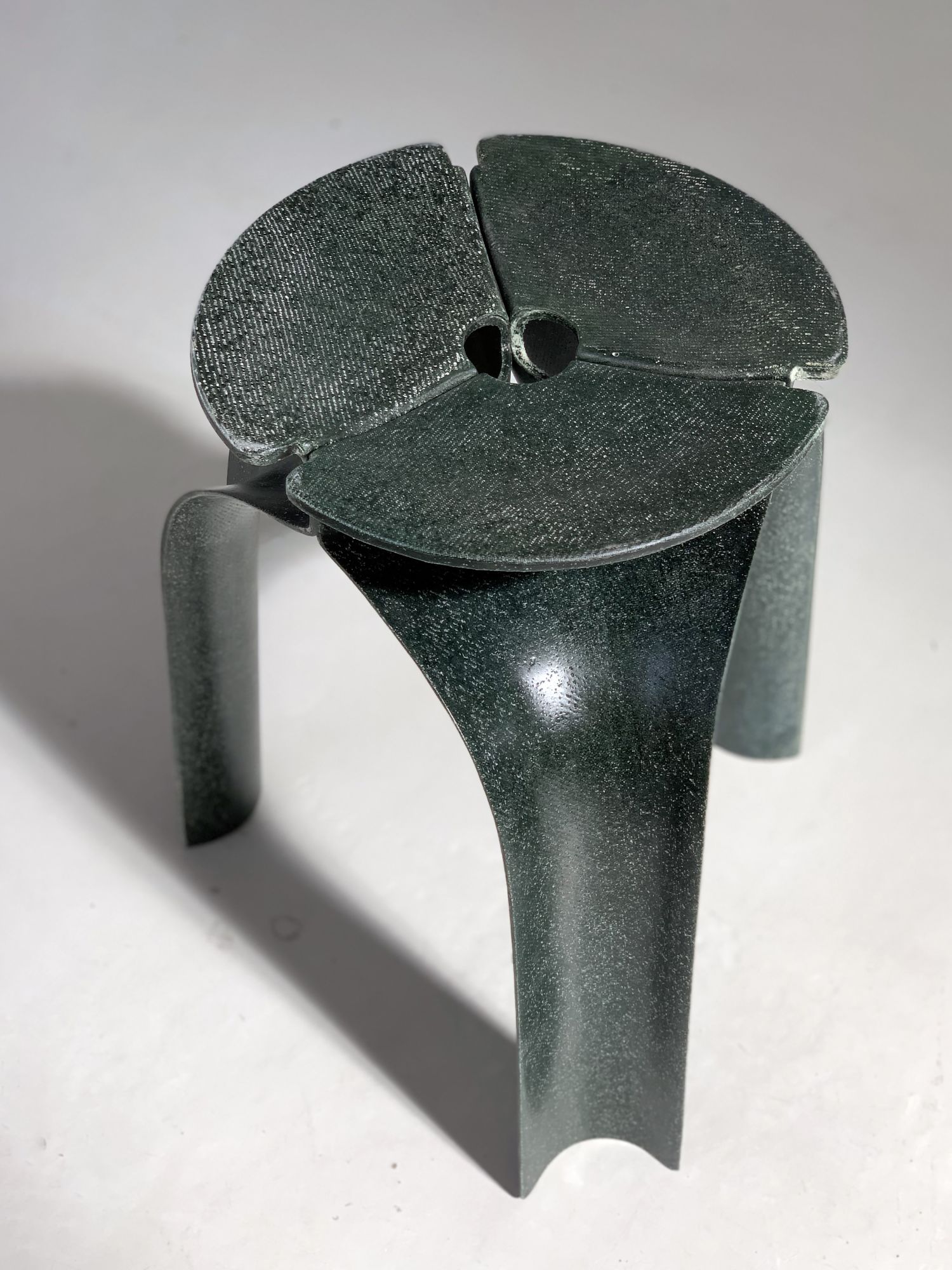
Background
Faced with the urgent impacts of climate change and the effects of over-consumption of plastic and concrete on the environment, designers have to react. Tackling these requires new understanding towards how resources, manufacture goods and consume products are exploited.
Modularity
The idea is to break an object into several modules that can be stacked among themselves for transportation and storage. This reduces the carbon footprint for moving around as well as increasing the owner's incentive for keeping the furniture.
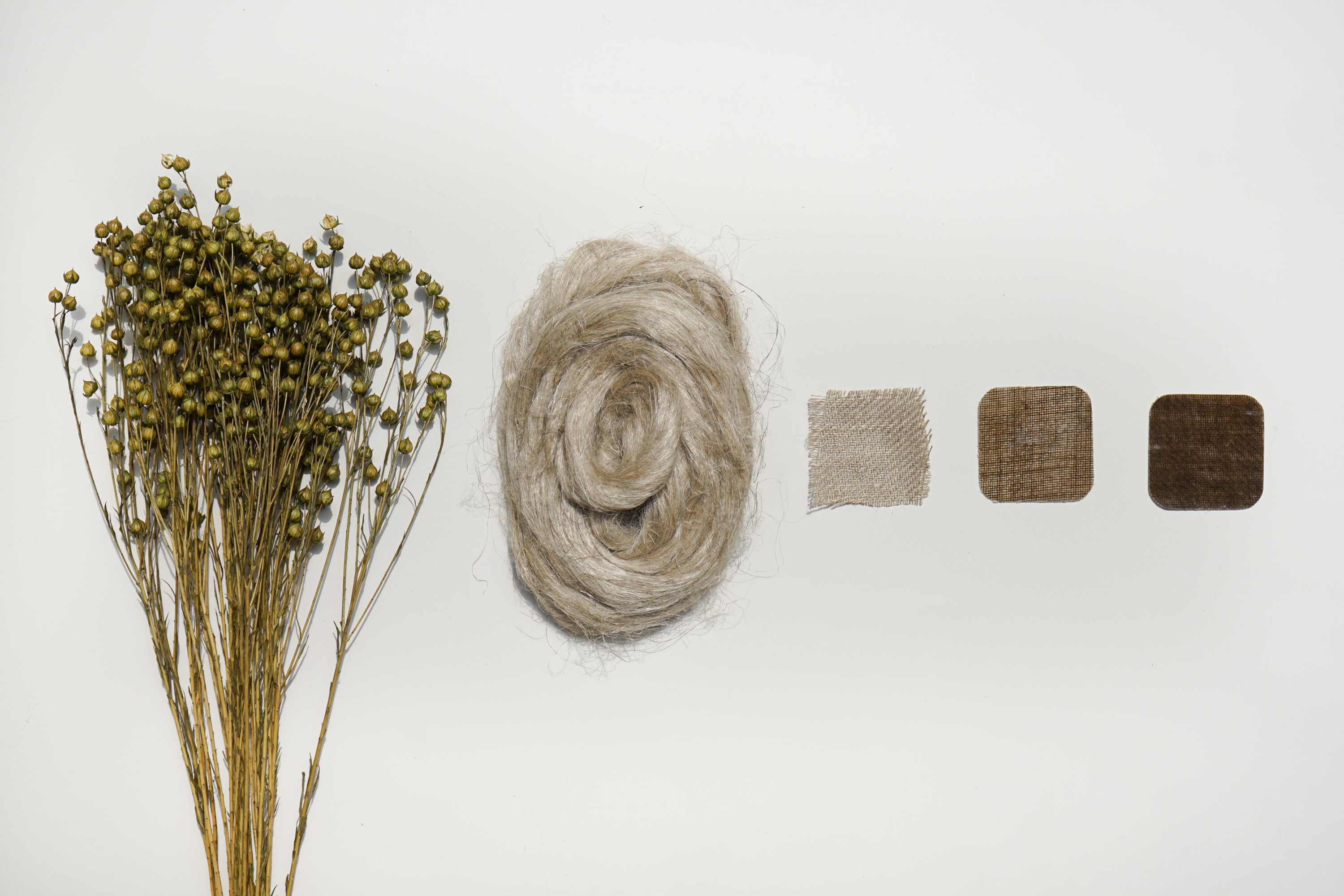
Flax Fiber
The super-light module is made of flax fiber, one of the strongest natural cellulosic material found. It performs similarly to carbon fiber, but wholly made of plant and fully biodegradable. Designed with a strategically curved geometry, the less than 3mm thick stool stands elegantly on its arches and embraces weight above. Bio-resin from Ludwigsburg, Germany and California, US were tested for our first prototypes. We are now shifting to biodegradable PLA that are manufactured with corn and contains starch. We are experimenting and improving the material for degradation in a controlled environment.


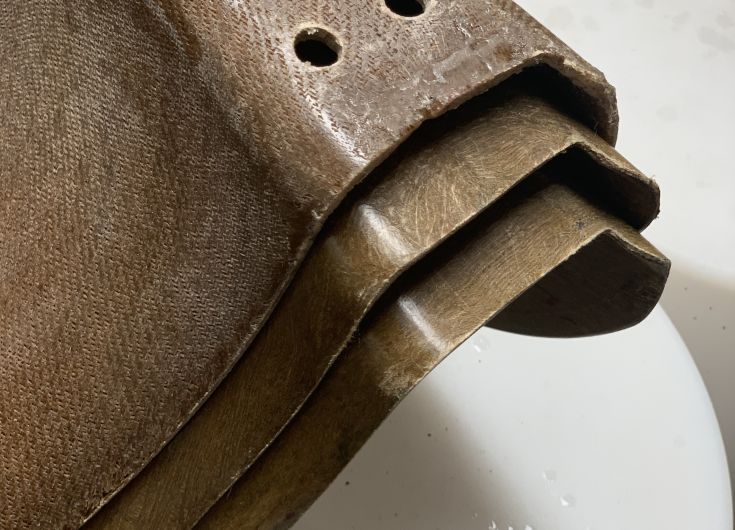
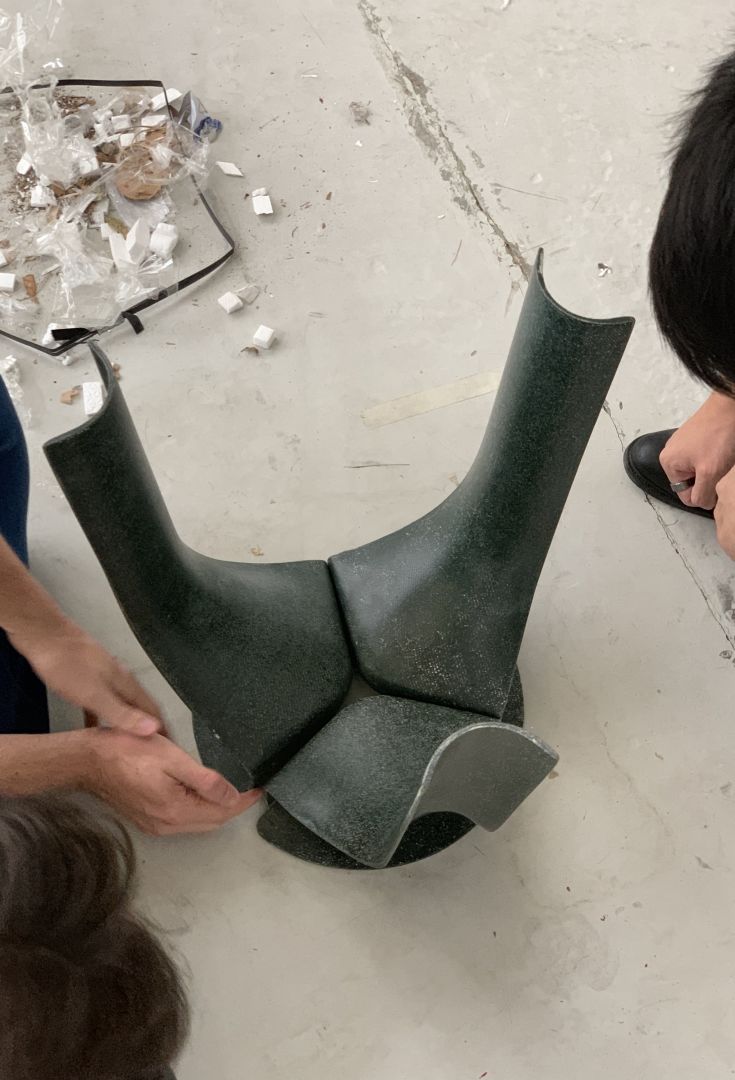
Fabrication
The first prototype was made by German fabricators in Stuttgart who work with Porsche and Mercedes Benz making carbon fiber car shells. The team translated the knowledge and know-how of the car industry into the furniture industry. Many iterations of analog and digital models were made to attain desired form and performance. The design and engineering process involved much calculations, algorithms, simulations and automation. It is a project that fuses art and science.
